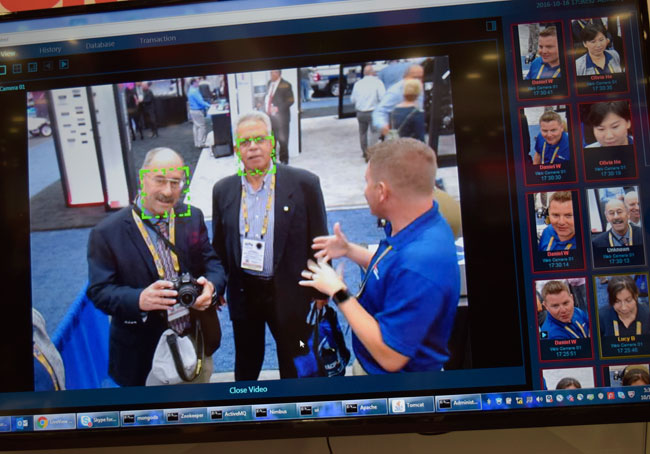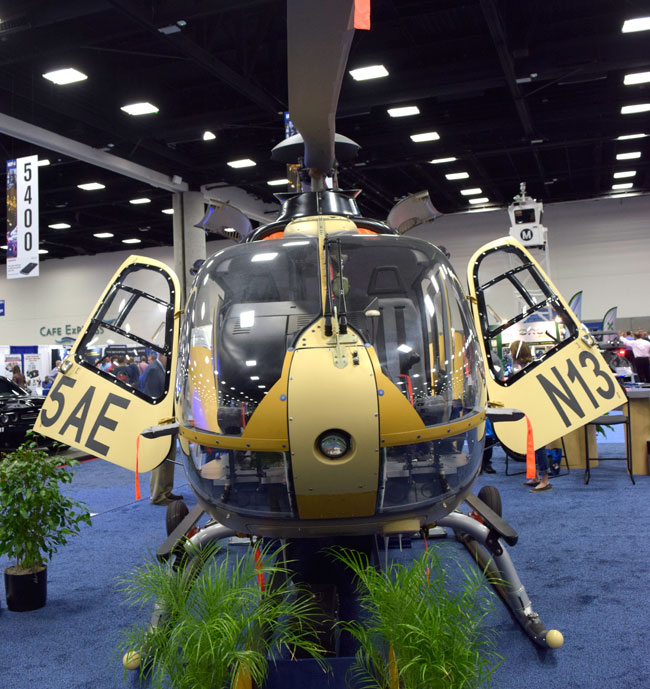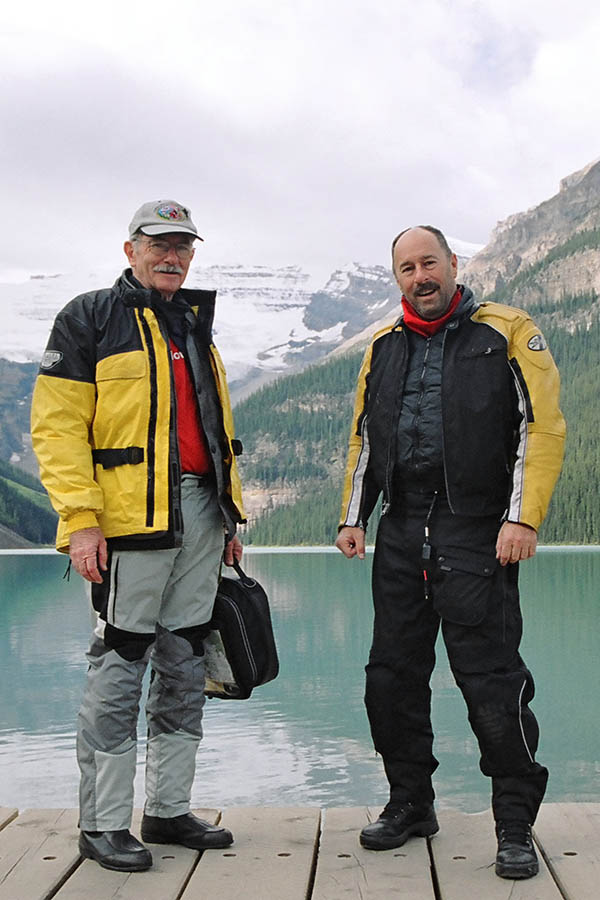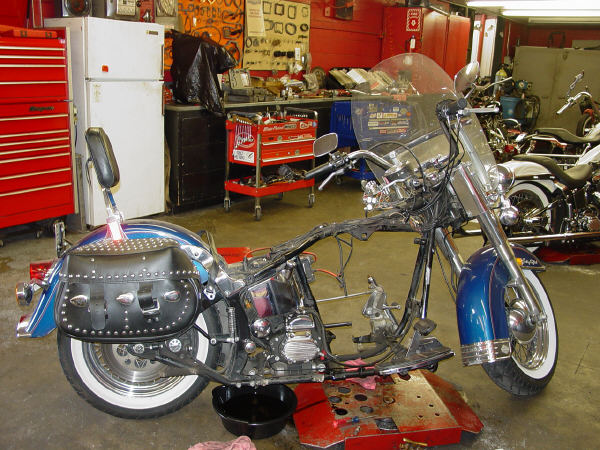
So this all got started on a trip to Baja. My beloved ’92 Softail started clanging and banging and bucking and snorting somewhere around Ensenada. I was headed south with my good buddy Paul from New Jersey (not the Paul I grew up, but another one). It was obvious something wasn’t right and we turned. It wasn’t the end of the world and the Harley did manage to get me home, but I could tell: Something major had happened. The bike was making quite a bit of noise. I had put 400 miles on it by the time I rode it back from Mexico. I parked the Harley, got on my Suzuki TL1000S, and we changed our itinerary to ride north up the PCH rather than south into Baja. That trip went well, but there was still the matter of the dead Softail.
Here’s where it started to get really interesting. My local Harley dealer wouldn’t touch the bike. See, this was around 2005 or so, and it seems my Harley was over 10 years old. Bet you didn’t know this: Many Harley dealers (maybe most of them) won’t work on a bike over 10 years old. The service manager at my dealer ‘splained this to me and I was dumbfounded. “What about all the history and heritage and nostalgia baloney you guys peddle?” I asked. The answer was a weak smile. “I remember an ad with a baby in Harley T-shirt and the caption When did it start for you?” I said. Another weak smile.
I was getting nowhere fast. I tried calling a couple of other Harley dealers and it was the same story. Over 10 years old, dealers won’t touch it. I was flabbergasted. For a company that based their entire advertising program on longevity and heritage, I thought it was outrageous. Chalk up another chapter in my book, Why I Hate Dealers.
A friend suggested I go to an independent shop. “It’s why they exist,” he said. So I did.
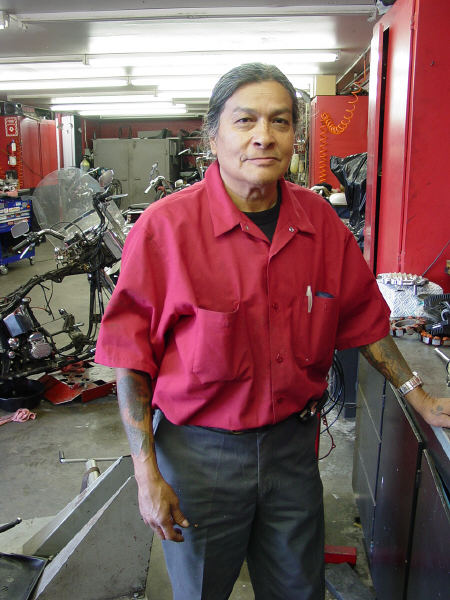
There was this little hole-in-the-wall place on Holt Boulevard in Ontario, in kind of a seedy part of town, near where the local Harley dealer used to be. The Iron Horse. You gotta love a shop with a name like that. The guy who ran it was a dude about my age named Victor. I could tell right away: I liked the shop and I liked Victor. I got my Harley over there and I stopped by a few days later to hear the verdict: The engine was toast.
“What happened here,” said Victor, “is that one of your roller lifters stopped rolling, and it turned into a solid lifter. When I did that, the cam and the lifter started shedding metal, and the filings migrated into the oil pump. When that stopped working, the engine basically ate itself….”
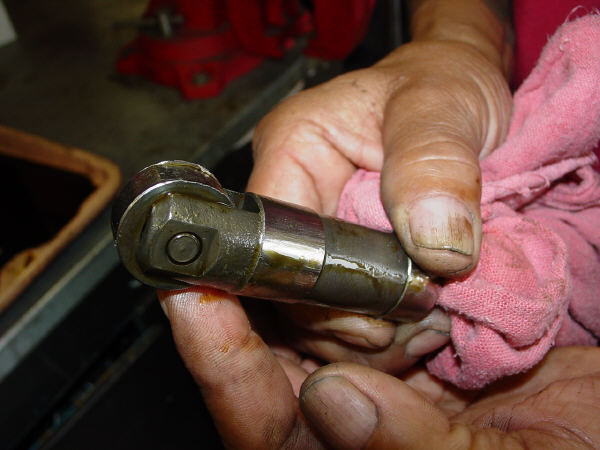

“You’ve got lots of other things not right in your motorcycle, too,” Victor explained. “The alternator is going south, your cam got chewed up, the oil pump is toast, the belt is tired, and you’ll probably want to gear it a little taller to reduce the vibration like the new Harleys do.”
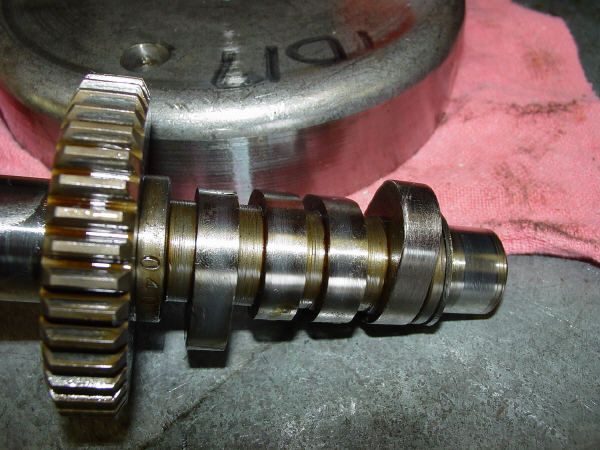
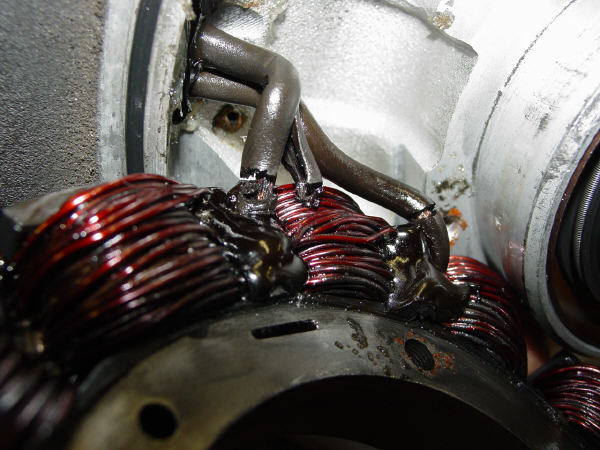
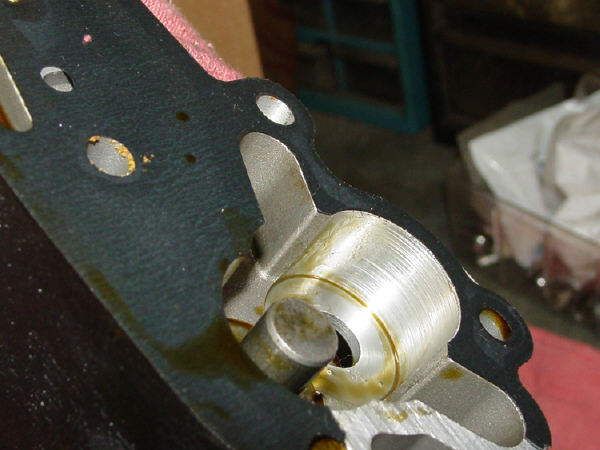
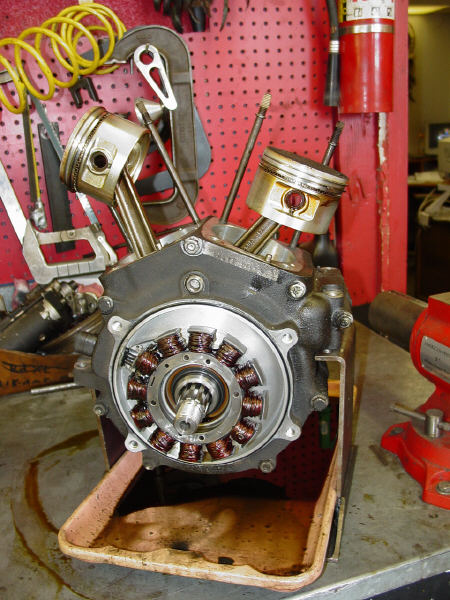
Victor gave me a decent price for bringing the engine back to its original condition (in other words, a rebuild to stock), but it wasn’t cheap. Then he offered an alternative.
“I can rebuild it with S&S components for about the same price,” he said, “and that’s with nearly everything new except the cases. We’ll keep the Harley cases because then the engine number stays the same, and it’s still a Harley. It would be a 96-inch motor instead of an 80-inch motor, and I think you’d like it. It would be about the same price as rebuilding it with Harley parts. You’d get new pistons, rods, flywheels, and nearly everything else. I’d have to take the cases apart and get them machined to accept the S&S stroker crank and cylinders, and we’d reassemble it with new bearings. Oversized S&S forged pistons would go in with a 10.1:1 compression ratio, and that means you’d have to run high test. Oh, yeah, there’s new S&S heads, a new manifold, and a new S&S Super carb. And an S&S cam.” Then he showed me the components in a brochure, and another chart that showed the difference in power.
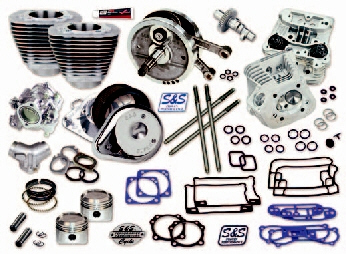

It was an easy decision. For the same money it would cost to bring the Harley back to stock, I could get it redone as a real hot rod. For me, it was a no-brainer. My days of bopping around on a 48-hp, 700-lb Harley would be over. The horsepower would double. Bring it on!
My Harley was still running on the original belt drive, and I had Victor replace that, too. And as long as the belt was being replaced, I went with Victor’s recommendation to swap to taller sprockets. That would give the bike a bit more top end and cut some of the vibration at cruising speeds.
I wrote a check and asked Victor to call me when the parts came in. I wanted to photograph the whole deal. Victor said he would, and I stopped at the Iron Horse frequently over the next several weeks.


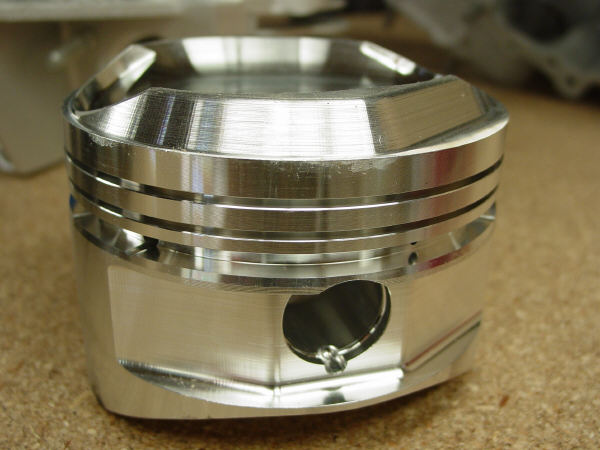
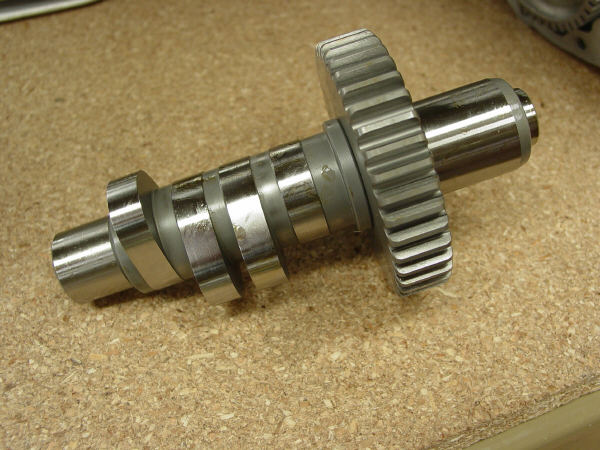
I was enjoying this. The parts didn’t come in all at once, and that was fine by me. I enjoyed stopping in at the Iron Horse and taking photos. It was something I looked forward to at the end of each day. It was really fun as the motor came together. Victor asked if I wanted the cylinders and cylinder heads painted black like they originally were, or if I wanted to leave them aluminum. It was another no-brainer for me: Aluminum it would be!

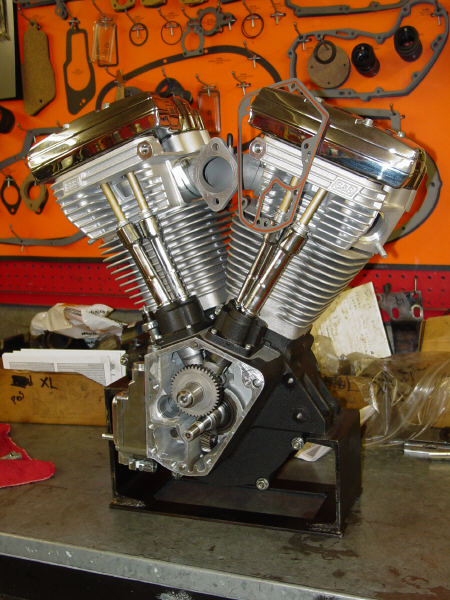
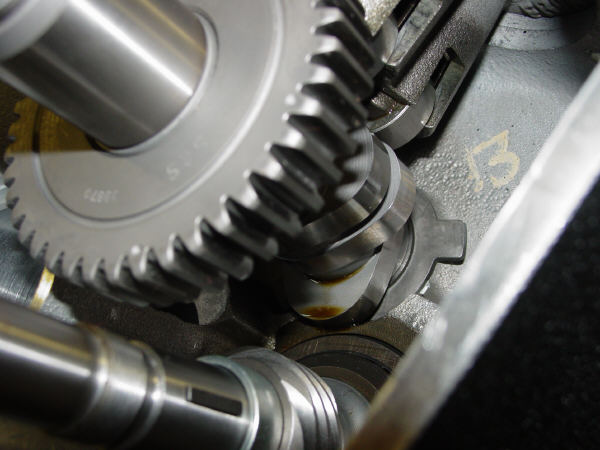
One day not long after the motor went together I got the call: My bike was ready. It was stunning and I rode the wheels off the thing. Here’s the finished bike…my ’92 Softail with the S&S 96-inch motor installed.
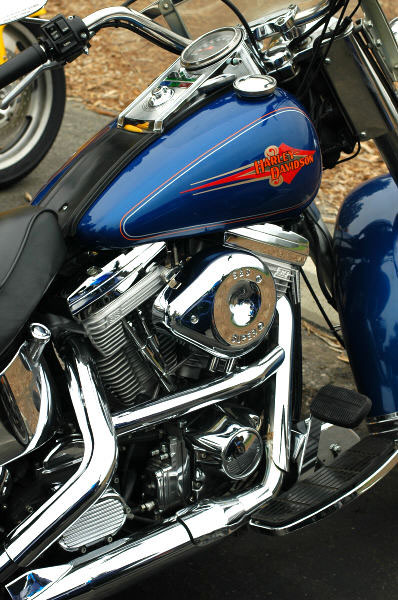
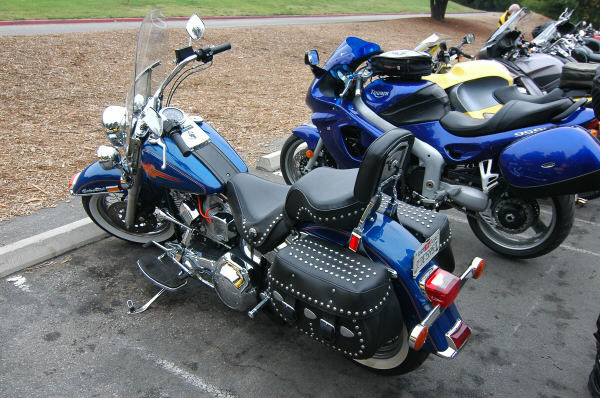
The S&S motor completely changed the personality of my Harley. I had thought it was quick when Laidlaw’s installed the Screaming Eagle stuff back at the 500-mile service, but now, at 50,000 miles with the S&S motor, I wasn’t in Kansas anymore, Toto. In the 14 years I had owned my Harley previously, I had just touched 100mph once. Now, the bike would bury the needle (somewhere north of 120mph on the Harley speedometer) nearly every time I took an entrance on to the freeway. This thing was fast! Fuel economy dropped to the mid-30-mpg range, but I didn’t care. My Harley was fast! The rear tire would wear out in 3,000 miles, but I didn’t care. The Harley was fast! It ran rich and you could smell gasoline at idle, but I didn’t care. Did I mention this thing was fast?
You might think I would have kept the Harley and put another zillion miles on it, but truth be told, my riding tastes had changed and I only kept it for another year after the rebuild. I was riding with a different crowd and I had a garage full of bikes, including the ’95 Triumph Daytona 1200 I’ve previously blogged about, my Suzuki TL1000S, a pristine bone-stock low-mileage ’82 Honda CBX, and a new KLR 650 Kawasaki. You wanna talk fast? The TL and the Daytona were scary fast. Yeah, the S&S was a runner, but fast had taken on a new definition for me.
And then one day, it happened. My wife had asked me to pick up something at the store while I was out seeking my fortune on the Harley, and when I came home, I realized I forgot to stop for whatever it was. I could have gone out on the Harley again, but for whatever reason, the KLR got the nod instead.
The bottom line: I had back to back rides on the S&S Softail and the KLR, and that’s when it hit me: I had bought the KLR new for about what I had in the S&S motor. The KLR was quicker at normal speeds, it handled way better, it was a much smoother and more comfortable, and it was more fun to ride. That was a wake-up call for me. The Harley went in the CycleTrader that day, and it sold the day after that. Regrets? None. I’d had my fun, and it was time to move on.
Want to never miss an ExNotes blog? Sign up here…

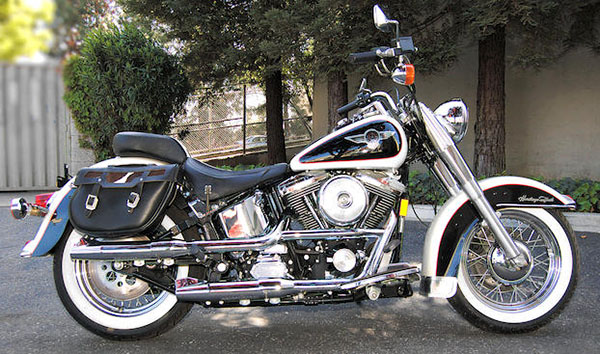

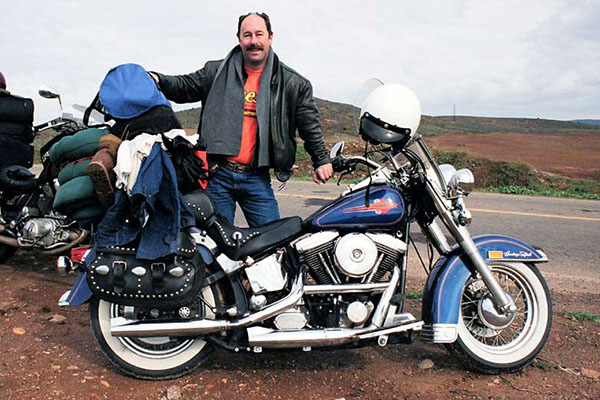
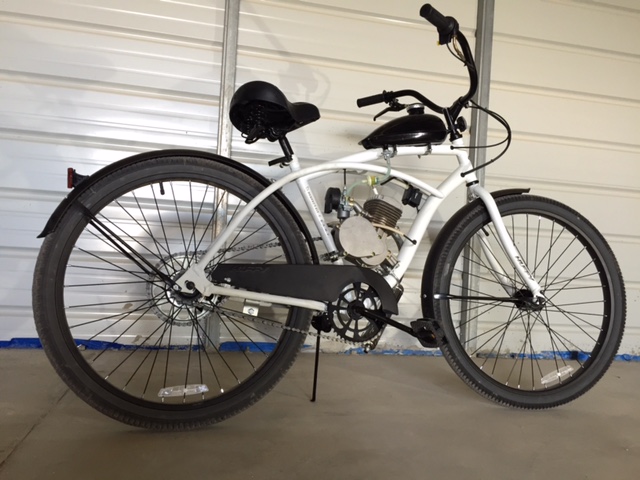 I managed to get all the cables routed and connected. The electrical wiring is concealed inside the large diameter front down tube along with the clutch and throttle. Mini Motor Madness was looking sharp but there were still a few more details to attend.
I managed to get all the cables routed and connected. The electrical wiring is concealed inside the large diameter front down tube along with the clutch and throttle. Mini Motor Madness was looking sharp but there were still a few more details to attend. The cute little gas tank has studs spot-welded onto the underside of the tank. Thin brackets fit onto these studs and clamp the tank to the top frame tube. Except that the brackets are so thin they distort when tightened. The studs needed a few spacers to give the nuts something to tighten against.
The cute little gas tank has studs spot-welded onto the underside of the tank. Thin brackets fit onto these studs and clamp the tank to the top frame tube. Except that the brackets are so thin they distort when tightened. The studs needed a few spacers to give the nuts something to tighten against. From there it was a simple matter to connect the supplied fuel line and filter. The fuel line feels like silicone, it’s very soft and flexible, I don’t think it will need clamps. The kit came with a rubber gasket for the fuel petcock but it looked like the gasket would squirt out the side when the petcock was tightened. I used Teflon tape instead. It hasn’t leaked so far. So many little pieces came with this kit. It really is complete.
From there it was a simple matter to connect the supplied fuel line and filter. The fuel line feels like silicone, it’s very soft and flexible, I don’t think it will need clamps. The kit came with a rubber gasket for the fuel petcock but it looked like the gasket would squirt out the side when the petcock was tightened. I used Teflon tape instead. It hasn’t leaked so far. So many little pieces came with this kit. It really is complete. The Wal-Mart fender supports were made from ultra thin sheet metal. Just by looking at them I created a fracture. I cut some scrap L angle aluminum into braces and made a backing plate to spread the load a bit. Hopefully the fender won’t tangle in the wheel.
The Wal-Mart fender supports were made from ultra thin sheet metal. Just by looking at them I created a fracture. I cut some scrap L angle aluminum into braces and made a backing plate to spread the load a bit. Hopefully the fender won’t tangle in the wheel.
 Long time Mini Moto Madness readers will recall the chain alignment issue I was having in an earlier episode. I meant to get back to the problem but the bike was nearly complete. I had to hear it run, man. I turned on the gas, pedaled down Tinfiny’s steep, rutted driveway, popped the clutch and the little motor fired right up. For about a second.
Long time Mini Moto Madness readers will recall the chain alignment issue I was having in an earlier episode. I meant to get back to the problem but the bike was nearly complete. I had to hear it run, man. I turned on the gas, pedaled down Tinfiny’s steep, rutted driveway, popped the clutch and the little motor fired right up. For about a second. To ride this puppy I’d have to bite the bullet and take that damn rear sprocket off (again!) and fit spacers. Like I said earlier, this kit is complete. It had everything needed to shim the sprocket, although the shims were a little harder to access.
To ride this puppy I’d have to bite the bullet and take that damn rear sprocket off (again!) and fit spacers. Like I said earlier, this kit is complete. It had everything needed to shim the sprocket, although the shims were a little harder to access. After butchering the sprocket for shim stock I reinstalled the rear sprocket. Now on their 3rd round trip the elastic stop nuts were losing elasticity but I was all in, I had to ride the beast. The sprocket was a tad wobblier than I remember but my patented sprocket-tuning tool allowed me to true up the mess to a reasonable level.
After butchering the sprocket for shim stock I reinstalled the rear sprocket. Now on their 3rd round trip the elastic stop nuts were losing elasticity but I was all in, I had to ride the beast. The sprocket was a tad wobblier than I remember but my patented sprocket-tuning tool allowed me to true up the mess to a reasonable level. And it worked! The little beast fired up and settled into a retro idle, the smoke poured from the recommended 16:1 fuel mix ratio. I live in a steep, hilly area and the bike is geared too tall. I don’t know how fast it goes (that will have to wait for the full exhaustnotes.us road test) but it’s faster than any coaster brake bicycle should be going. The gearing would be ok in Florida but at 6000 feet elevation with 1st gear hills all around it’s Light Pedal Assist all the way.
And it worked! The little beast fired up and settled into a retro idle, the smoke poured from the recommended 16:1 fuel mix ratio. I live in a steep, hilly area and the bike is geared too tall. I don’t know how fast it goes (that will have to wait for the full exhaustnotes.us road test) but it’s faster than any coaster brake bicycle should be going. The gearing would be ok in Florida but at 6000 feet elevation with 1st gear hills all around it’s Light Pedal Assist all the way.
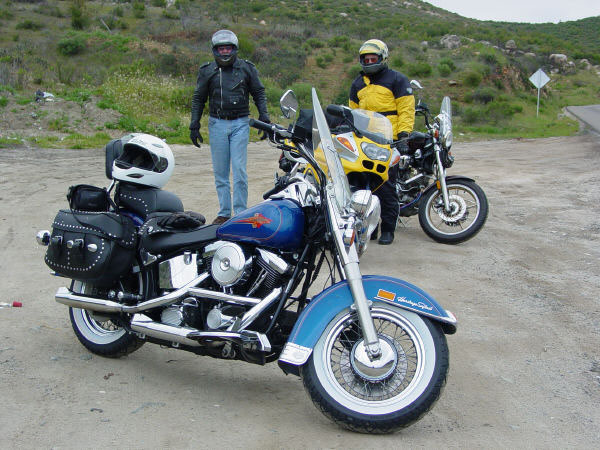
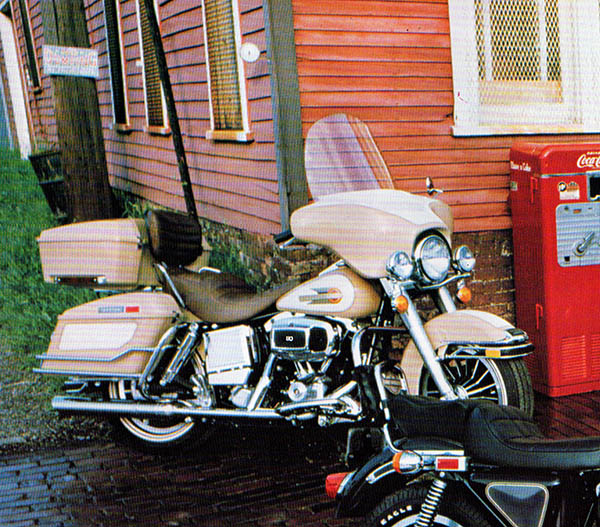
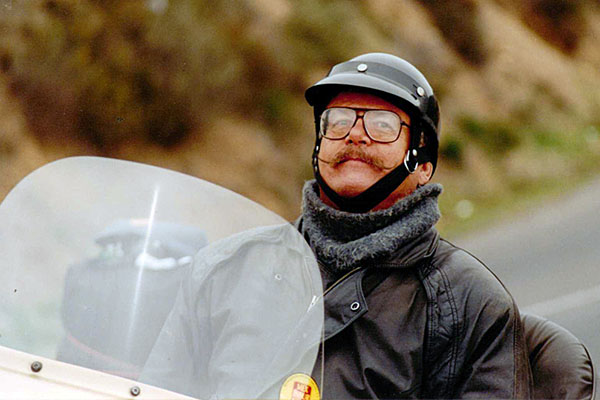
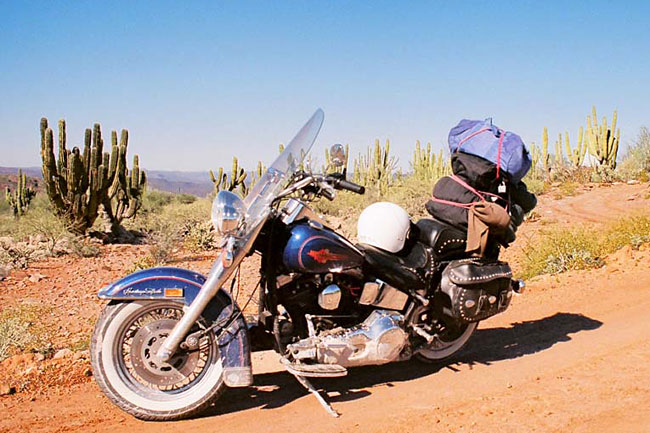
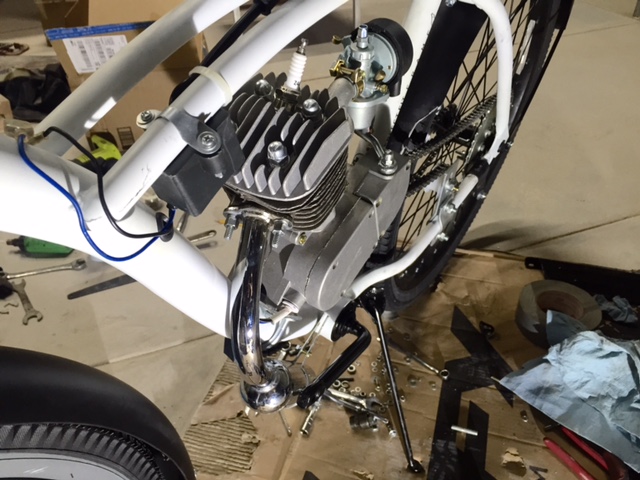 Not only do I rarely finish projects, it takes forever for me not to finish them. I’m a slow worker. I get bogged down in details and miss the big picture. Details like the front engine mount on Mini Moto Madness. The front down tube on the Huffy is a large diameter pipe and the smaller, cast in semi-circle on the engine crankcase will not fit. The engine kit comes with a steel adapter plate and a U-bolt that fits the fat tube but the thing looks like hell.
Not only do I rarely finish projects, it takes forever for me not to finish them. I’m a slow worker. I get bogged down in details and miss the big picture. Details like the front engine mount on Mini Moto Madness. The front down tube on the Huffy is a large diameter pipe and the smaller, cast in semi-circle on the engine crankcase will not fit. The engine kit comes with a steel adapter plate and a U-bolt that fits the fat tube but the thing looks like hell. I got to thinking and planning, figuring on a chunk of aluminum to fit the two different pipe diameters, holes drilled, cuts made, longer bolts, it was getting out of hand, man. This time I was able to catch myself. What the hell am I doing? Every other mini motor I looked at used the stock mounting plates so I said, “Screw it.” and went with the popular choice. Right there is a two-day labor saving decision.
I got to thinking and planning, figuring on a chunk of aluminum to fit the two different pipe diameters, holes drilled, cuts made, longer bolts, it was getting out of hand, man. This time I was able to catch myself. What the hell am I doing? Every other mini motor I looked at used the stock mounting plates so I said, “Screw it.” and went with the popular choice. Right there is a two-day labor saving decision. With the motor firmly in place I spent some time on the chain drive. The rear fender came in contact with the chain so I had to trim it and roll the sharp edge. It’ll need a paint job and stronger brackets but I’m going to wait until the mechanical is done before tackling cosmetics.
With the motor firmly in place I spent some time on the chain drive. The rear fender came in contact with the chain so I had to trim it and roll the sharp edge. It’ll need a paint job and stronger brackets but I’m going to wait until the mechanical is done before tackling cosmetics. It’s almost impossible to get two chains to agree on length so the mini motor kit comes with an idle roller for tension adjustment. The idler also turns the chain angle upwards before the lower frame tubes get narrow, keeping the chain from rubbing. I don’t like the thing but I’m not sure what to do about it. My rear sprocket is slightly misaligned; the chain doesn’t jump off the sprocket but it sure favors the hub side. To center the chain the rear sprocket needs to go outboard 1/16” so that means making a spacer and reassembling the sprocket onto the wheel. I’m also considering adjusting the countershaft sprocket instead. I’ve decided to deal with this situation later.
It’s almost impossible to get two chains to agree on length so the mini motor kit comes with an idle roller for tension adjustment. The idler also turns the chain angle upwards before the lower frame tubes get narrow, keeping the chain from rubbing. I don’t like the thing but I’m not sure what to do about it. My rear sprocket is slightly misaligned; the chain doesn’t jump off the sprocket but it sure favors the hub side. To center the chain the rear sprocket needs to go outboard 1/16” so that means making a spacer and reassembling the sprocket onto the wheel. I’m also considering adjusting the countershaft sprocket instead. I’ve decided to deal with this situation later. The pretty chrome exhaust pipe didn’t quite clear the Huffy’s crank arms. I didn’t want to mess up the chrome by cutting and welding the pipe so instead clamped the exhaust flange in the vise and twisted the pipe a few degrees. The pipe twisted beautifully with no wrinkles or kinks. The crank arms clear with room to spare. Sadly, the chrome plating did not go along with the program and delaminated. Pro Tip: Buy the kit with the black painted exhaust. It’s easier to modify for your particular bike.
The pretty chrome exhaust pipe didn’t quite clear the Huffy’s crank arms. I didn’t want to mess up the chrome by cutting and welding the pipe so instead clamped the exhaust flange in the vise and twisted the pipe a few degrees. The pipe twisted beautifully with no wrinkles or kinks. The crank arms clear with room to spare. Sadly, the chrome plating did not go along with the program and delaminated. Pro Tip: Buy the kit with the black painted exhaust. It’s easier to modify for your particular bike. The ignition coil was a straightforward install. I’ve upped the difficulty rating by routing the wiring through the frame. Most of these bike builds look cluttered with wires and cables. I’ll run the controls inside the frame as much as possible.
The ignition coil was a straightforward install. I’ve upped the difficulty rating by routing the wiring through the frame. Most of these bike builds look cluttered with wires and cables. I’ll run the controls inside the frame as much as possible. The rotor output wiring will also run internally. I’m sure this will end in tears but I saved a lot of time not fabricating a front engine mount so I’m using that time credit to tidy up the job.
The rotor output wiring will also run internally. I’m sure this will end in tears but I saved a lot of time not fabricating a front engine mount so I’m using that time credit to tidy up the job. The other sloppy area on these builds is the handlebar. Unlike a motorcycle, there is no speedometers or bodywork to hide the throttle/clutch/kill wiring. I’ve drilled holes and snaked the stuff through the bars. It looks cleaner to me. Yes, I’ve weakened the handlebars. I’m willing to risk a crash from structural failure in support of aesthetics. We are all artists and it’s about time we started living like it.
The other sloppy area on these builds is the handlebar. Unlike a motorcycle, there is no speedometers or bodywork to hide the throttle/clutch/kill wiring. I’ve drilled holes and snaked the stuff through the bars. It looks cleaner to me. Yes, I’ve weakened the handlebars. I’m willing to risk a crash from structural failure in support of aesthetics. We are all artists and it’s about time we started living like it.
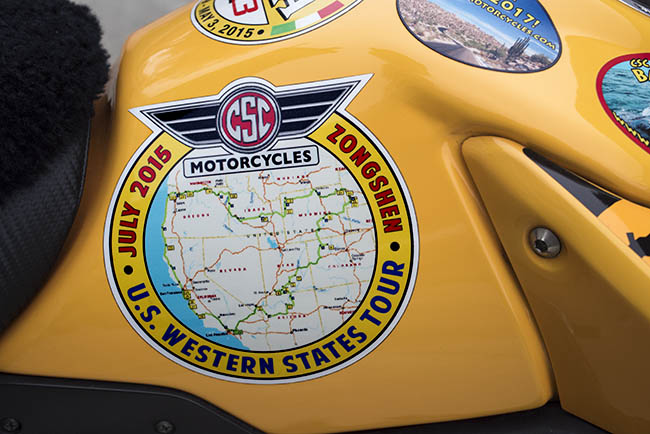














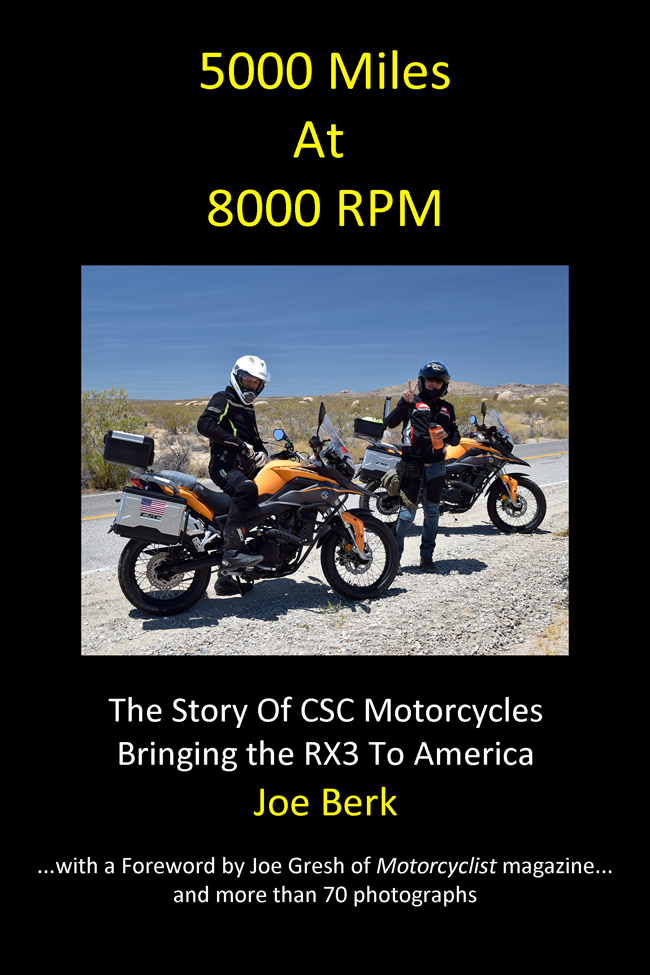
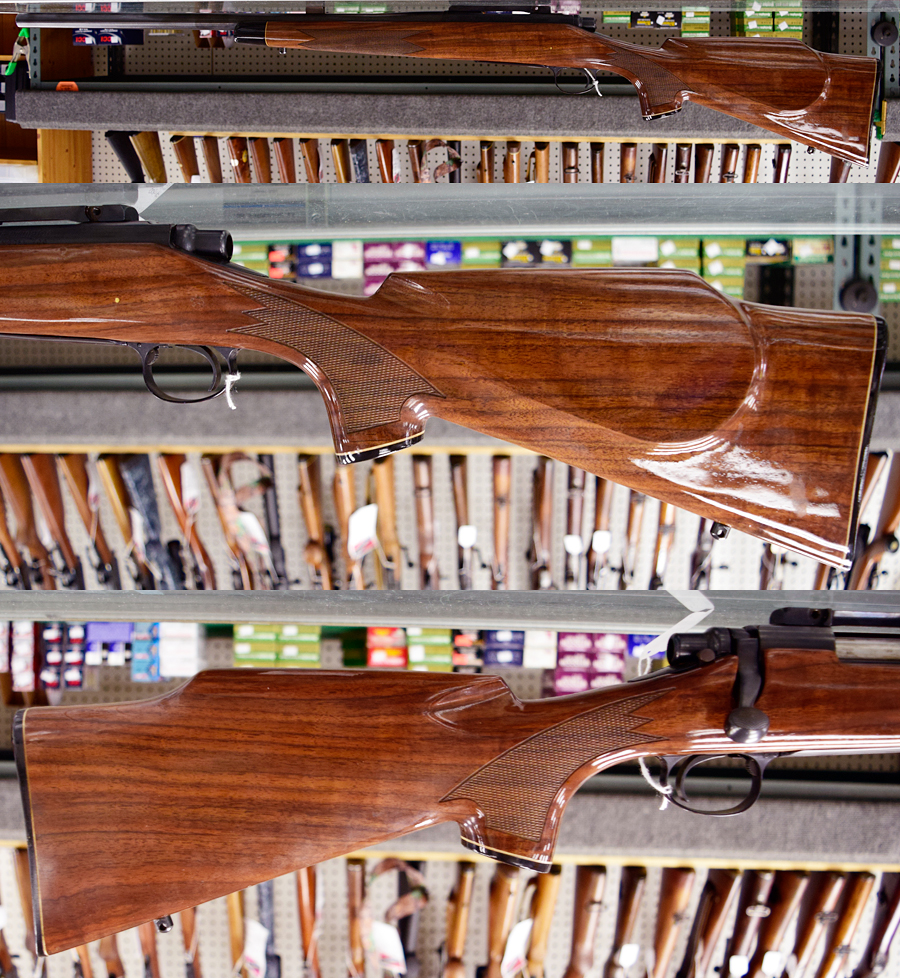

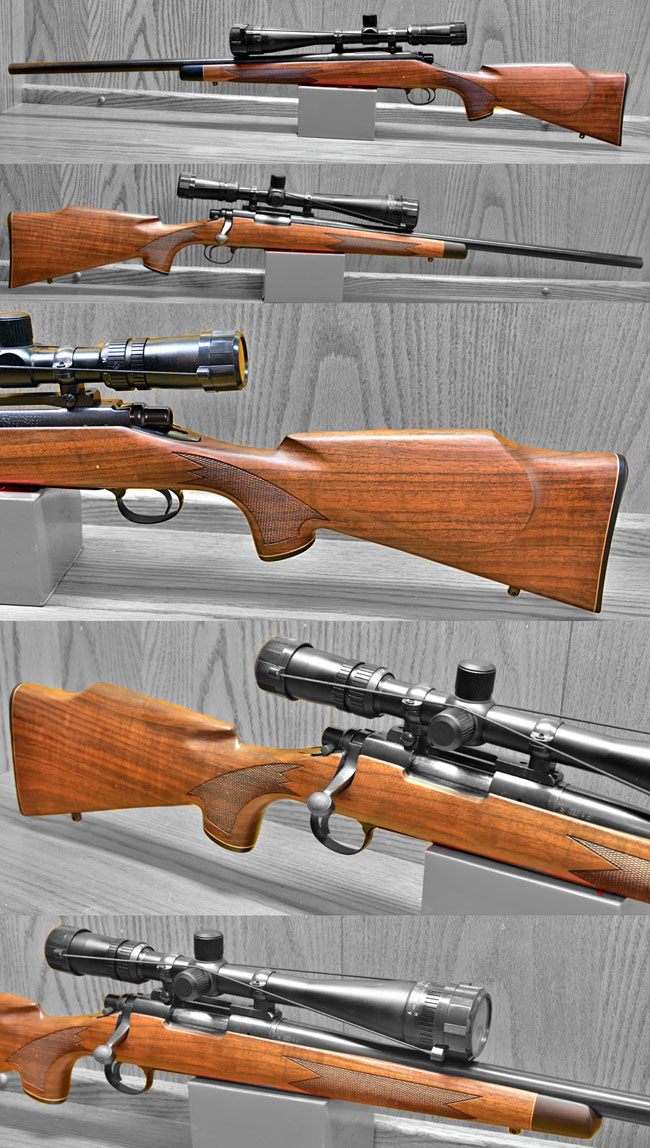
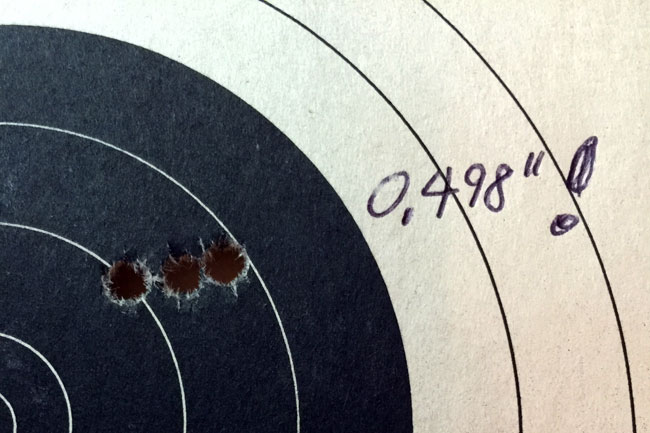
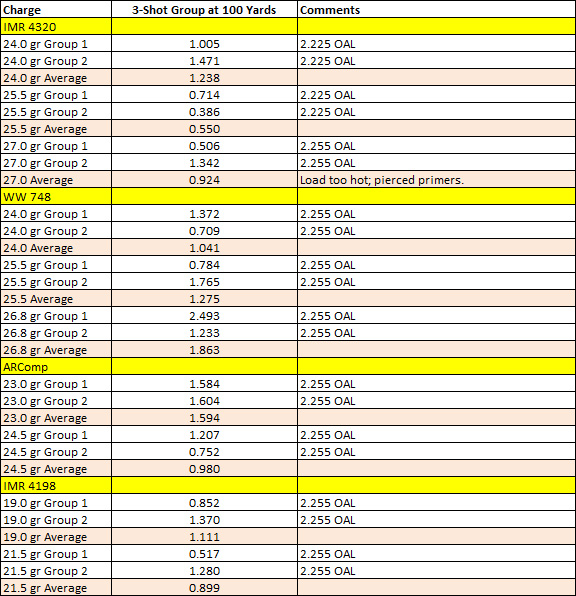
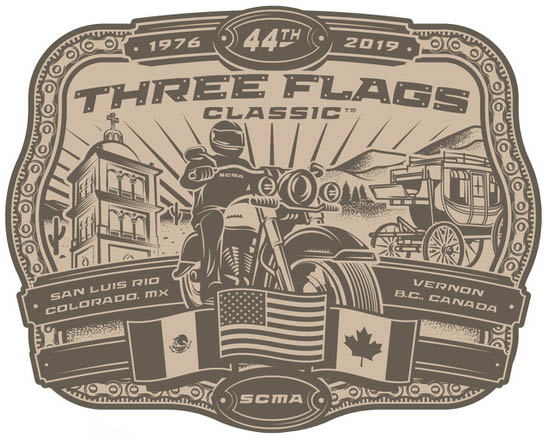
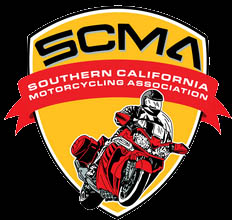 I am getting thoroughly pumped up about riding the 2019 Three Flags Classic this year on the RX4. There’s just something about the Three Flags Classic that’s magic, and I haven’t been this excited about getting out on the road in quite a while. It’s going to be grand and it’s going to be a blast, and you’ll be able to follow my personal ride from Mexico through the western United States on up into Canada right here on the ExNotes blog. I’ll have tons of great photos and the writing will be as good as I can make it. You’ll be able to follow first hand my further impressions of the
I am getting thoroughly pumped up about riding the 2019 Three Flags Classic this year on the RX4. There’s just something about the Three Flags Classic that’s magic, and I haven’t been this excited about getting out on the road in quite a while. It’s going to be grand and it’s going to be a blast, and you’ll be able to follow my personal ride from Mexico through the western United States on up into Canada right here on the ExNotes blog. I’ll have tons of great photos and the writing will be as good as I can make it. You’ll be able to follow first hand my further impressions of the 
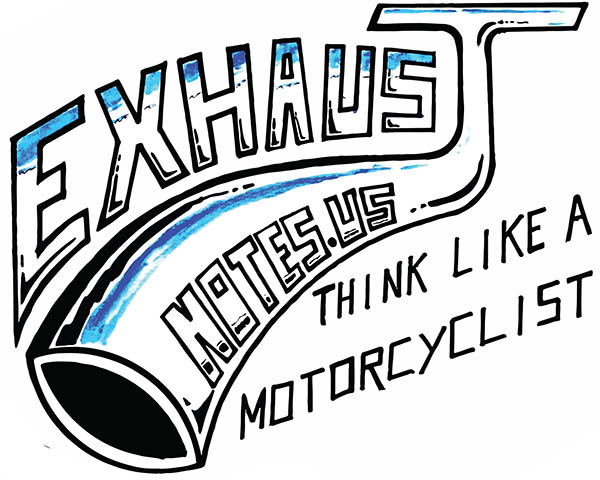
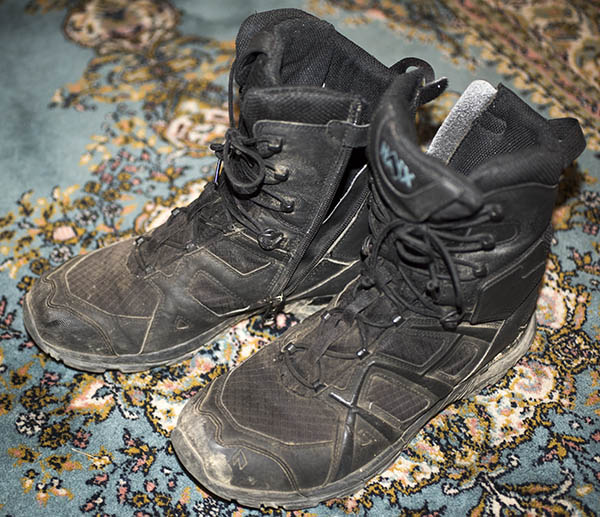
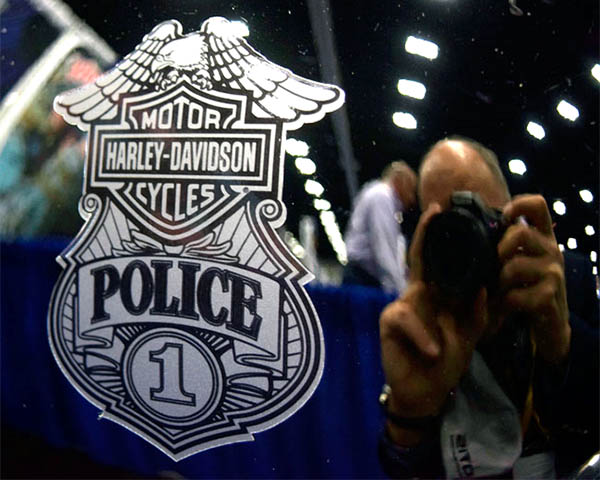 I had a to have a police connection to get in to the event, so Mike deputized me as the Administrative Assistant to the Chief of Police. My new position included a cool official-looking police ID card and I asked if I could get a gun out of the deal. Mike’s answer was a curt “No,” but hey, I tried. We had a hell of a time at that convention. There was all kinds of interesting gear on display. Guns. Helicopters. Police motorcycles. Patrol cars. Surveillance equipment. You get the idea. Oh, yeah. And boots. I’ll get to that in a second.
I had a to have a police connection to get in to the event, so Mike deputized me as the Administrative Assistant to the Chief of Police. My new position included a cool official-looking police ID card and I asked if I could get a gun out of the deal. Mike’s answer was a curt “No,” but hey, I tried. We had a hell of a time at that convention. There was all kinds of interesting gear on display. Guns. Helicopters. Police motorcycles. Patrol cars. Surveillance equipment. You get the idea. Oh, yeah. And boots. I’ll get to that in a second.